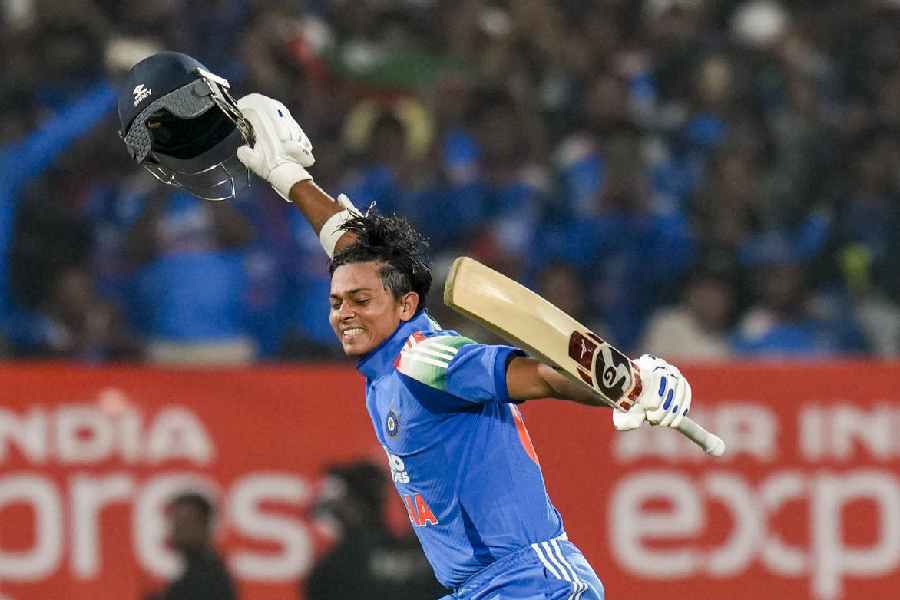Arvind Kejriwal has been steadfast in his campaign strategy in the run-up to the Delhi elections, ensuring the contest is played out on his turf: a chief minister who is focused on school education, power, healthcare and other developmental parameters.
And if the Aam Aadmi Party (AAP) is going into this crucial election as the apparent favourite, the BJP is giving it one last shot to woo the electorate by unleashing Amit Shah, who since last week has been trying to steer the debate to nationalism by referring to the ongoing Shaheen Bagh protests.
The idea is to force Kejriwal to respond, which he is seasoned enough not to.
At a rally in Babarpur in north-east Delhi on January 26, Shah declared that people should “press the (voting) button with such anger that the current is felt at Shaheen Bagh.” At Rithala and Janakpuri, Shah spoke against Sharjeel Imam, the student activist of JNU initially associated with the Shaheen Bagh protests.
Shah accused Kejriwal and his government of supporting Shaheen Bagh protestors and protecting Imam, who has been charged with sedition in five states, including UAPA in Assam. Delhi police arrested Imam from his home in the Jehanabad area of Bihar on Tuesday.
Shah also claimed that Delhi government schools lacked basic infrastructure, a claim that AAP has rejected outright. Kejriwal responded to Shah’s criticism with a press conference and later posted a video on Republic Day, accusing the home minister of mocking the people of Delhi.
“Garibon ke bacche engineer, doctor ban rahe. Aap parson aaye aur in bacchon ki mehnat ka mazak uda kar chale gaye. Aapne kaha Dilli me padhai bohot kharab hai (Children of the poor are becoming doctors and engineers. You came the day before and mocked the struggle of these children. You said education is Delhi is not good),” Kejriwal says in the video.
AAP has, over the years, created an identity for itself. It wants to be seen as a party that works for development. After attacking Prime Minister Narendra Modi in the initial years of coming to power in Delhi in February 2015, Kejriwal switched tracks. He chose “bijli sadak paani” as the theme to ensure his party was ahead in the game.
“AAP started to change after its debacle in the Delhi municipal elections. Instead of attacking Modi and his government, the party started highlighting its work in health and education,” explained Rahul Verma, a fellow at the Centre for Policy Research.
Verma, who studies voting behaviour and party politics, said that AAP was forced to change strategy after its loss in the 2019 Lok Sabha elections. It began focusing on local issues and an agenda based on governance.
Hence, in recent rallies Kejriwal is constantly trying to build a narrative around the party’s work in Delhi, speaking of how students of the city’s government schools were performing better than those studying in private schools.
He spoke of his government providing free electricity and water, about installing CCTV cameras and affordable healthcare for the masses.
“Yeh chunav alag hain, isme sab milke jhadu pe vote dena (This election is different. Together, everyone should vote for the broom),” he said at a rally, appealing to supporters of the BJP and Congress to forget ideology and vote for development, in the name of “schools, hospitals and electricity”.
Director of the Centre for the Study of Developing Societies Sanjay Kumar stresses how local issues assume prime of place in Delhi elections. “Delhi elections are focused more on what the Delhi government has been able to do for the city of Delhi,” he iterated.
AAP has, therefore, chosen to stay silent on most of the controversies that have arisen since the return of the Modi government, particularly avoiding those championed by the Union home minister.
“For the last few months, AAP has tried to stay away from such issues. In fact, it supported the move to abrogate Article 370 in J&K,” said Verma.
Kejriwal was conspicuously silent when protests started against the controversial Citizenship (Amendment) Act (CAA), the proposed National Population Register (NPR) and National Register of Citizens (NRC) in December last year even when other chief ministers came out in support of the agitations.
Mamata Banerjee took to the streets in Bengal and Pinarayi Vijayan introduced a resolution in the Kerala Assembly opposing CAA. But Kejriwal did not take a stand.
After the Delhi police’s brutal crackdown on students at the Jamia Millia Islamia campus on December 15, and similar atrocities in Seelampur and Daryaganj, all that Kejriwal said was that protests ought not turn violent.
He did not meet injured students. Nor did he visit the university or go to the localities. He chose not to condemn the police, a force that is under the Union home ministry.
“…everyone knows which party is capable of instigating riots,” he said at a press conference indicating his resolve to not get dragged into the CAA debate.
Verma said that all Opposition parties seemed to be fearful of a Hindu backlash. “I don’t know if something like this (Hindu backlash) would happen but this is what they feel,” he said, explaining Kejriwal’s attempts at trying to distance his party from the protests.
When he is pressed further about his absence from Shaheen Bagh by one television channel or the other, Kejriwal’s stock answer has been something like this: since the protests started because of the Union government, it is the Union home minister who should go to Shaheen Bagh.
Verma said the only way for the BJP to counter the AAP narrative was to try and polarise people and steer the discourse towards nationalism. “What it is trying to do in Delhi is to peg this election on three things: Kashmir, Ayodhya and CAA-NRC, all Amit Shah-led ideological moves,” said Verma.
AAP, he said, was a “catch-all party”. With Muslim votes influencing several seats, a large section of the community had shifted allegiance from Congress to AAP. It helped that the AAP government of Delhi has brought about visible changes in several unrecognised colonies where Muslims live.
Yet, there was a last minute shift of Muslim votes from AAP to Congress in the Lok Sabha elections. But Assembly elections are meant to be different. And in Delhi, Kejriwal is the only counter to the BJP.











